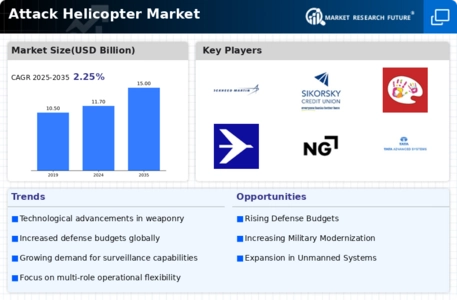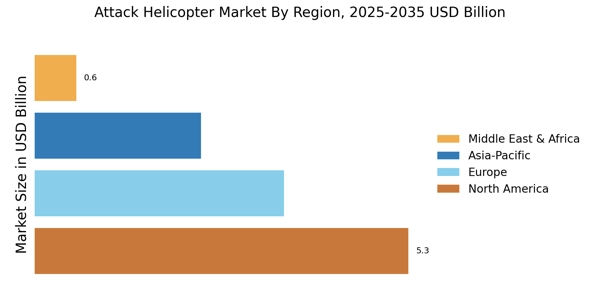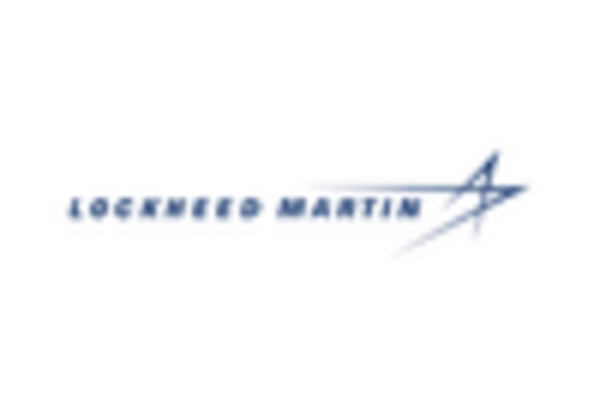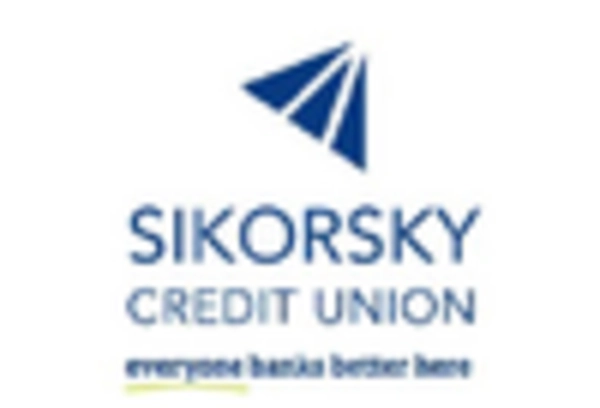Increased Defense Budgets
The attack helicopter Market is benefiting from increased defense budgets across various nations. Governments are prioritizing military modernization and enhancing their aerial capabilities in response to evolving security threats. This trend is particularly evident in regions experiencing geopolitical tensions, where nations are investing heavily in advanced military technologies, including attack helicopters. Data from defense expenditure reports indicate that several countries have raised their defense budgets by over 10% in recent years, directly impacting procurement strategies for attack helicopters. As a result, manufacturers are likely to see a surge in demand for their products, further driving growth in the Attack Helicopter Market.
Rising Geopolitical Tensions
The Attack Helicopter Market is significantly influenced by rising geopolitical tensions around the world. As nations face increasing threats from regional conflicts and terrorism, the need for advanced military capabilities becomes paramount. Attack helicopters play a crucial role in counterinsurgency operations and border security, making them indispensable assets for modern armed forces. Analysts suggest that the ongoing conflicts in various regions are likely to drive demand for attack helicopters, as countries seek to bolster their defense capabilities. This heightened focus on military readiness may lead to an increase in procurement contracts, thereby stimulating growth in the Attack Helicopter Market.
Focus on Counterinsurgency Operations
The Attack Helicopter Market is increasingly shaped by a focus on counterinsurgency operations. As asymmetric warfare becomes more prevalent, military forces are adapting their strategies to address unconventional threats. Attack helicopters are uniquely suited for these operations, providing close air support and rapid response capabilities in challenging environments. The demand for helicopters equipped with advanced surveillance and targeting systems is expected to rise as military forces prioritize effectiveness in counterinsurgency missions. Market forecasts indicate that this segment of the attack helicopter market could experience growth rates of around 7% annually, reflecting the critical role of these platforms in modern military operations. This trend highlights the evolving nature of warfare and the importance of specialized capabilities within the Attack Helicopter Market.
Technological Advancements in Weaponry
The Attack Helicopter Market is experiencing a notable transformation due to rapid technological advancements in weaponry. Innovations such as precision-guided munitions and advanced targeting systems enhance the effectiveness of attack helicopters in combat scenarios. The integration of artificial intelligence and machine learning into these systems allows for improved decision-making and operational efficiency. As nations invest in modernizing their military capabilities, the demand for technologically advanced attack helicopters is likely to rise. Reports indicate that the market for advanced weapon systems is projected to grow significantly, with a compound annual growth rate of over 5% in the coming years. This trend suggests that manufacturers focusing on cutting-edge technology will have a competitive edge in the Attack Helicopter Market.
Growing Demand for Multi-Role Platforms
The Attack Helicopter Market is witnessing a shift towards multi-role platforms that can perform various missions, including reconnaissance, close air support, and anti-tank operations. This versatility is increasingly appealing to military forces seeking to maximize their operational capabilities while minimizing costs. The ability to adapt to different combat scenarios enhances the strategic value of attack helicopters. Market analysis indicates that the demand for multi-role helicopters is expected to account for a significant portion of the overall attack helicopter market, with projections suggesting a growth rate of approximately 6% annually. This trend underscores the importance of flexibility in modern warfare, positioning multi-role attack helicopters as essential assets in the Attack Helicopter Market.

















